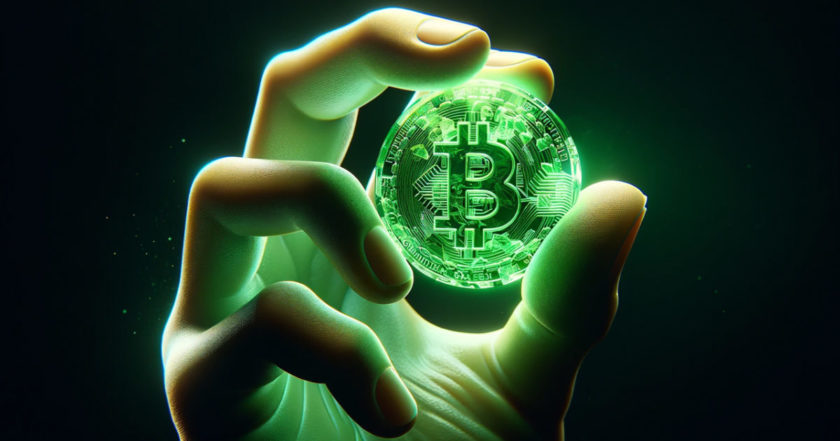Charles Hoskinson is best known today as a co-founder of both Ethereum and IOHK, where he leads the research, design and development of Cardano. But before these projects, there was Bitcoin. Back in 2013, he was the founding chairman of the Bitcoin Foundation’s education committee and established the Cryptocurrency Research Group.
In an interview with Bitcoin Magazine during the recent StartEngine Summit, Hoskinson began by saying that he views Bitcoin as a series of experiments to try and realize two key concepts:
“Can we achieve a decentralized form of value transfer or some sort of proto-money, and, instead of having a central entity issuing a token and securing it, can we release something decentralized with a secure ledger? And, if that happens, will it achieve real value in the marketplace?”
In the early days, said Hoskinson, it wasn’t clear if this thing was going to survive or not. “It actually took several years for that to turn into the bitcoin we know and love,” he said. “It had huge volatility in price. The volume would be $1,000 a day, the hashrate would go way up and way down. Some people would say, ‘Eh, I don’t wanna mine anymore.’ They’d turn their computer off, and the network would lose 30 percent of its hashrate.”
But the sea of change for Bitcoin took place in 2013. “As the market cap hit one billion, people started taking it really seriously. Many people entered the space, and, at that point, it became clear bitcoin was here to stay.”
The experiment was succeeding.
Lessons to Learn
“At that point, there were open questions that should have been rigorously analyzed,” he said. “We should have said, “Great, this concept is good, but now let’s re-iterate upon it and do it properly. What was really disappointing to me over the last five years I’ve professionally been in the space is that nobody took the time to rigorously solve these problems.”
Hoskinson evoked UTXO wallets, which Satoshi wrote about nine years ago, as an example of something which hasn’t been studied enough. “There were other things like network stacks, and what do you trade off when you move from one protocol to another, such as between proof-of-work to proof-of-stake to BFT protocols. How do you avoid things like Sybil attacks and so on.”
No one has written down all the lessons learned, he said. “They are just endemic inside the code.”
Taking this particular lesson to heart, with Cardano, Hoskinson has been formally analyzing network stacks and incentives, trying to get rid of the environmental problems present in bitcoin and its blockchain, writing a proper UTXO model and more.
And then there is the issue of mining.
“Everyone who is pro-Bitcoin says it’s a feature to use more energy than Chile,” said Hoskinson. “And there is no incentive to be greener. The more efficient you become, the more miners you build, so the hashrate — and, therefore, energy consumption — goes up.”
Hoskinson says Bitcoin tends toward centralization, too. “If you look at hashrate and who has control, less than 10 percent of the actors are in charge of the hashrate power of the bitcoin network. How can you say that is decentralized? Satoshi did something completely magical and wonderful. It’s worth a Turing prize. It’s an amazing thing.
“Nobody really followed up on it. Instead people doubled down on it. In the case of Ethereum, we kept the same sins and flaws in terms of economic policy and proof-of-work, etc.”
Can Bitcoin Be “Money”?
Hoskinson says there is a lack of seriousness about the economics of the space. “Bitcoin maximalists believe that bitcoin is the end-all, be-all of money.” They’re ignorant, he says, and told the following story of when he realized bitcoin could not be “money.”
“I went to Toronto to Anthony Di Iorio’s conference in April 2014,” recalled Hoskinson. “Mike Perklin (now the chief information security officer of Shapeshift) and I were going for BBQ. Mike wanted to go across town to a BBQ restaurant that accepts bitcoin.”
The two drove “into the middle of nowhere” for BBQ. And then the bill was presented. “Mike goes, ‘I think bitcoin is going to go up, so I am not going to buy it with bitcoin. I am going to use my credit card.’ It became clear to me — this is not money. It’s a commodity or a store of value.”
ICO Mania
“Every time you have technology,’ said Hoskinson, “people look at it and go, ‘Wow, this is amazing.’ In recent memory, all we have to compare this to is the ‘dotcom’ boom and bust. The notion that information can travel at speed of light, that I can send something to someone in China and he can send it back instantaneously. People thought, ‘This should disrupt markets, stocks, business structures, etc.’ We knew the Amazons, Facebooks, eBays and Ubers would come. We just didn’t know how and when.”
During the dotcom bubble, the market got ahead of the infrastructure and of the business ventures, Hoskinson suggests. “It became irrational, and people got mixed up, and the market collapsed. It took approximately 10 years for Amazon to regain its original market value. It didn’t mean the internet was broken or the concepts were wrong. It just meant that markets get ahead of progress.” He says the same thing happened during the recent ICO mania but on a shorter time horizon.
“People said, ‘Wow, there are trillions of dollars of locked-up value all over the world — that’s so cool. This tokenomics thing is going to allow us to unlock it. So that, effectively, means we are going to get rid of Ubers, Amazons, eBays and Facebooks, or they will have to reform themselves to remain competitive. That could be worth trillions.’ But, people assumed they should be worth trillions now. That’s not the case.”
Hoskinson concluded: “Consumers threw money at everything, and many projects that didn’t deserve it. Copycats were wildly overvalued. It was clear ICO mania was counterproductive and the markets would collapse. Once they did, people [can now] begin to return to rationality, and the bad stuff will be cleaned out. The good stuff with potential will stay and recover its all-time high values and be useful to humanity.”




